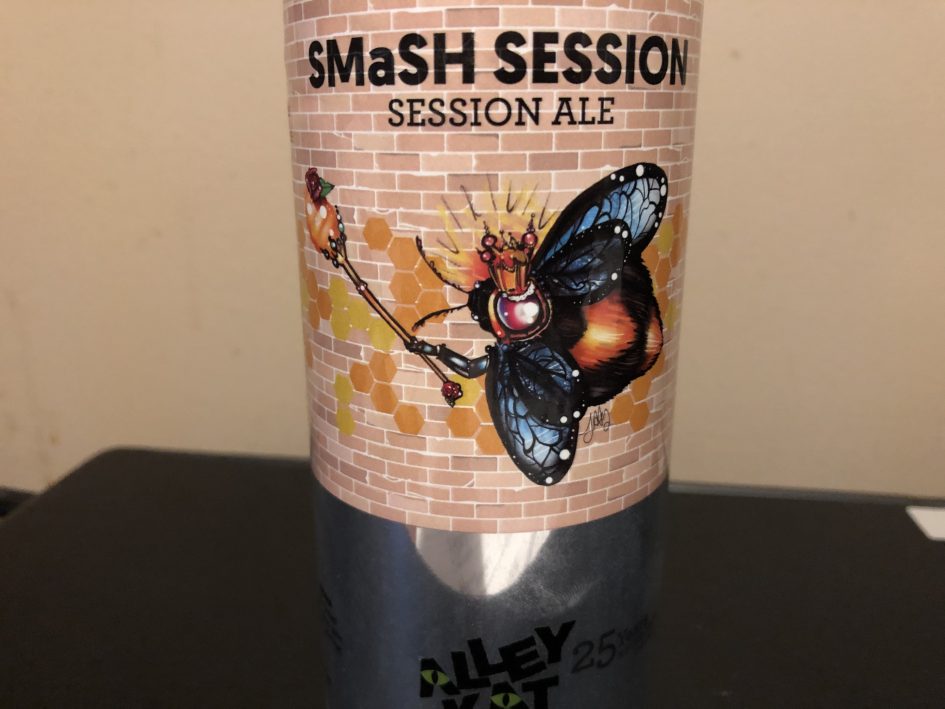Breweries are always trying something new. New hop varieties. New brewing techniques. New ways to name something IPA that is not an IPA. So one of the more interesting trends recently is SMaSH beer. SMaSH stands for Single Malt and Single Hops (hence the irritating lower-case ‘a’ in the middle).
It is not brand new – there have been examples of it floating around for the past few years. But, my eagle-like eyes have noticed a recent uptick in SMaSH beer by Alberta breweries. So I decided to do a CBC RadioActive beer column about it. Which you can listen to here.
The concept is simple. One type of malt, one variety of hop. Single hop beer are old news and most beer consumers completely understand the concept. Single malt is a bit more complicated to explain. Most beer are made with a selection of two to six or more types of malt. By types I mean malt processed in different ways. Most of the malt in a beer is base malt, sometimes referred to as 2-row. It is light flavoured and light coloured and offers the backbone all beer need. It is supplemented by smaller doses of a range of specialty malt, either kilned longer, roasted or processed in a way to draw out specific flavours and colours.
That is the nature of beer. Multiple malts. So reducing your recipe to just one malt – and it would have to be some version of a base malt – can be quite challenging. Where do you get the flavour and colour?
By all means it is certainly possible. Lots of styles call for mostly one kind of malt. But I contend it is still a very challenging thing to do. As my experience of recent examples attests.
The issue is that a beer needs balance. It is fine to impart interesting hop flavours and aromas in a beer. But to make the beer really work, it needs a backdrop of malt. If you only have one malt to work with that can be a hard thing to do. So you need to find just the right base malt.
Good thing Alberta (and other places) have recently seen a rise in small-scale craft malt houses. These independent, adventurous maltsters are producing a wide range of malt types, including unique base malts made with local barley varieties that offer flavours not found at the larger scale malt houses. That opens the door to finding a base malt that might offer enough flavour to hold up against the single hop.
On air we went with Alley Kat’s SMaSH Session Session Ale (what is with the double session?), part of their Back Alley series. I tried all the Alberta available examples (at least available to me) and decided to pick that one because it did the best job of accenting the malt flavour. It helped that it was a lower alcohol session ale, but it still found a way to bring out an interesting malt note balanced by a gentle hop. The malt, by the way, was a new base malt by Red Shed Malting.
I will say that SMaSH beer will not become a regular go-to for me. Overall they are too one-dimensional (which I blame on the malt), but they are fun experiments to try once in a while.
If you get a chance, pick one up. Try to isolate the malt flavours and identify what they bring to the beer overall. Then try a regular light-bodied beer and see if you can isolate that malt character. If you do that, the experiment will have been more than worthwhile.



September 21, 2020 at 12:56 PM
Regarding the double “session” in the Alley Kat beer name, it reminds of one of the years of Olde Deuteronomy where they had a typo on the label and misspelled it as “Olde Dueterononmy” (extra “on”). I wish I could remember the vintage, but it was a fair while ago, maybe 10 years. Neil hadn’ t noticed until I happened to point it out once while in picking up a keg or whatever.